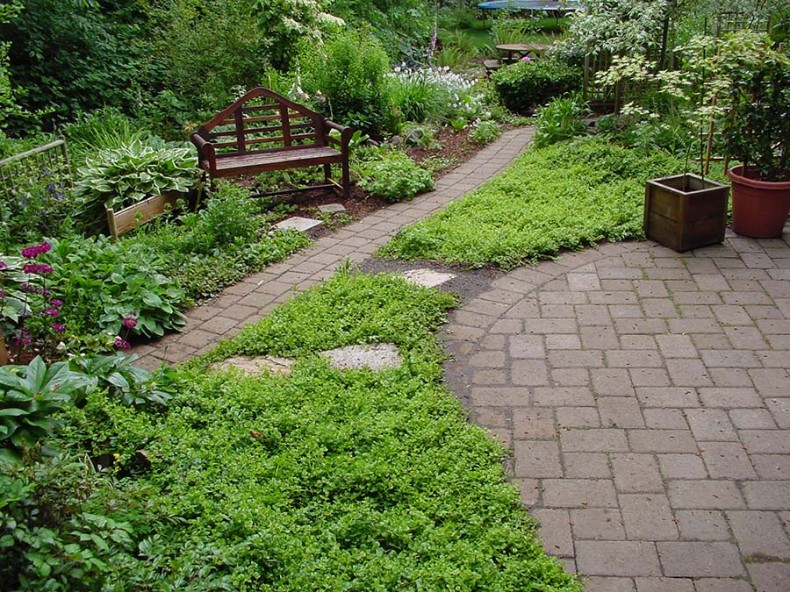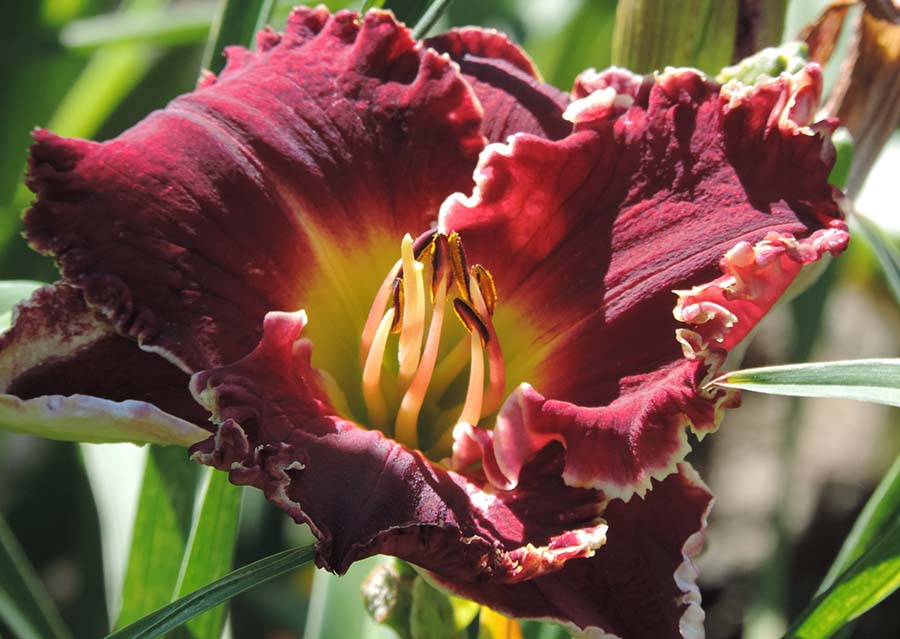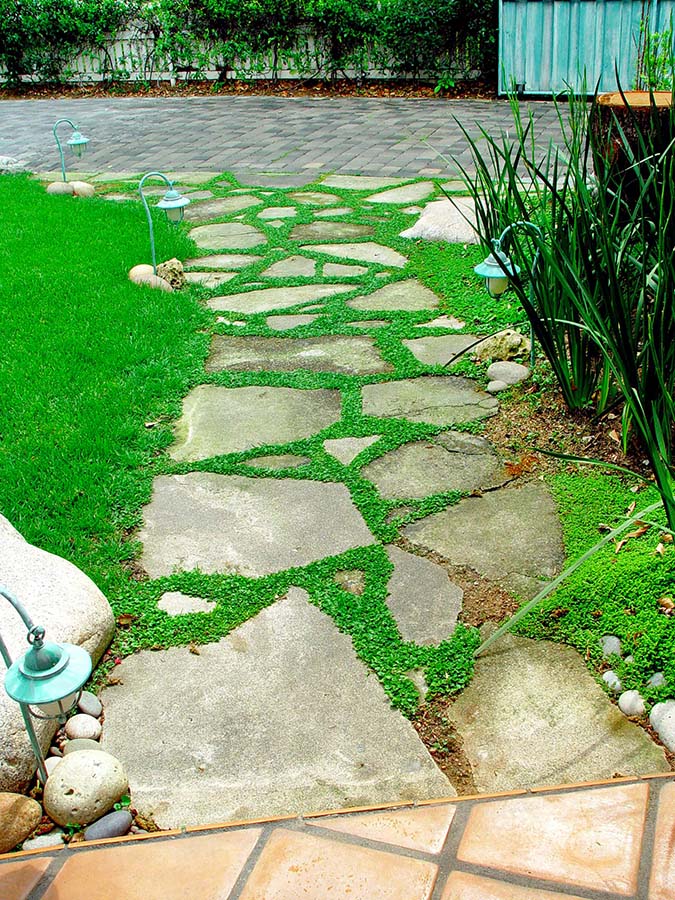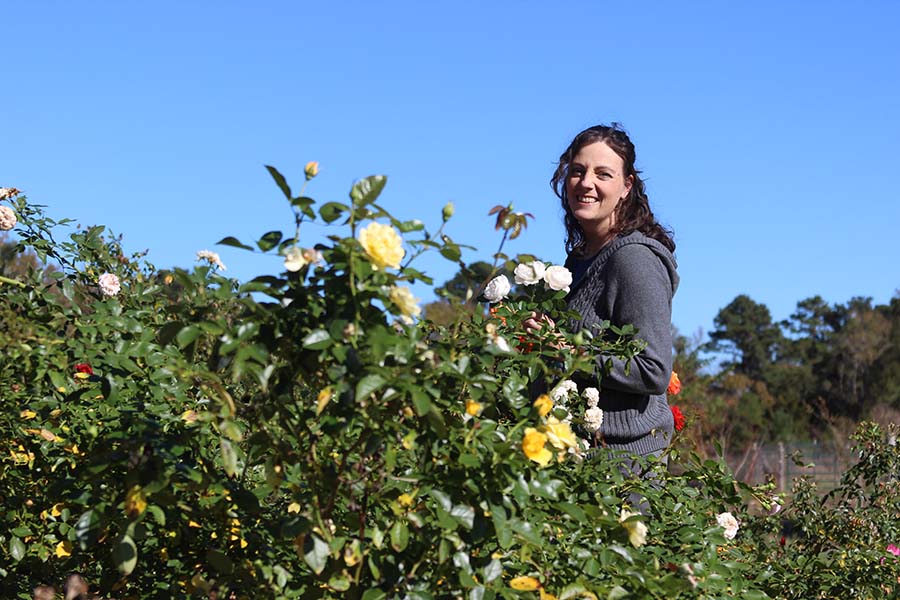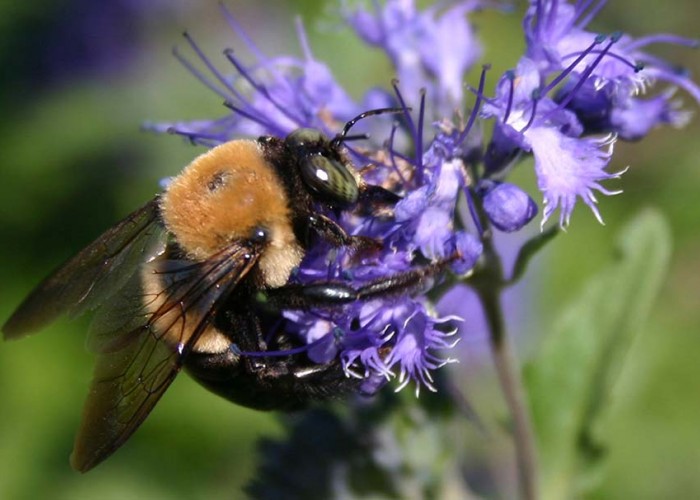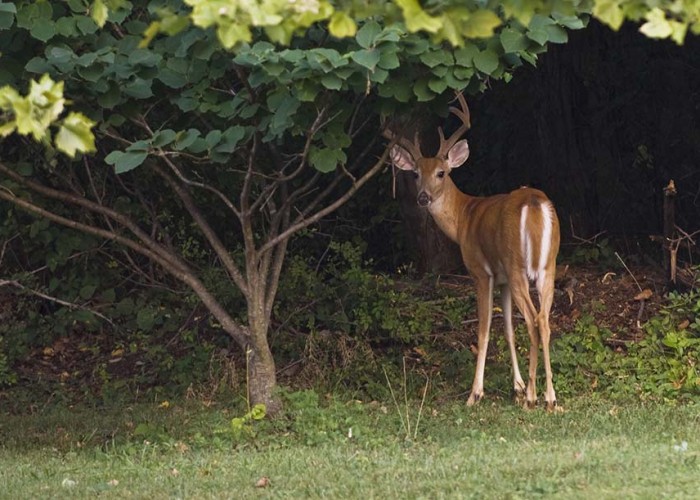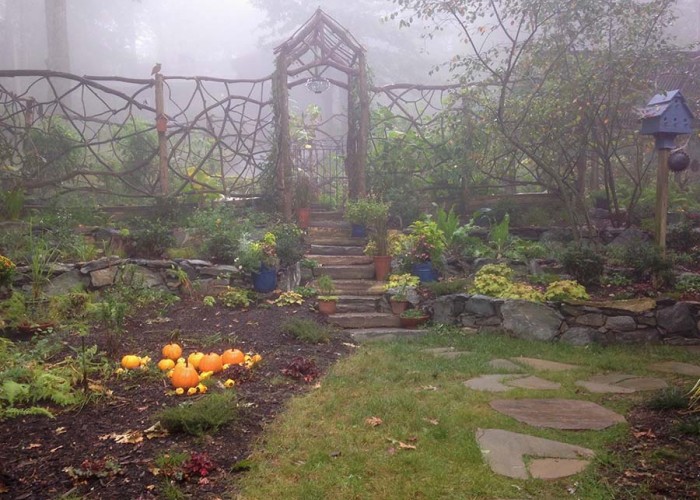Tips for the New Gardener
Gardening experts offer their thoughts on design
By Dianna TroyerCreeping Jenny (Lysimachia nummularia) grows adjacent to a path of pavers. (photo by Stepables)
As unique as fingerprints and snowflakes, the choice of how to design a garden is as limitless as an individual’s imagination.
“Ask yourself what you really want out of your garden, then design and plant with those goals in mind,” says Dave Whitinger, executive director of the National Gardening Association (NGA). “A lot of people just start planting things they are told to plant without thinking about whether they even want that. If you want to grow vegetables but dislike greens, don’t plant greens.”
Whitinger and his wife, Trish, NGA’s chief operating officer, prefer to think outside the [planter] box and design their gardens with vegetables and flowers in the same beds.
“In our pollinator garden, you might suddenly be surprised by a tomato plant or eggplant or who knows what else,” he says. “We also grow garlic throughout the gardens. We like oregano for fresh use and grow it everywhere. It makes an excellent ground cover, too. We also grow a lot of rosemary and many other herbs.”
Day lilies are popular for home gardeners to hybridize in a variety of colors from blushing orange to deep burgundy. (photo by Dianna Troyer)
The Whitingers and their eight children care for countless plants in a 12-foot-square greenhouse and eight 10-foot-by-10-foot raised beds arranged in a keyhole shape. The beds yield food for the family, as well as thousands of heirloom vegetables they sell as starts to local gardeners in the spring.
“More and more people — especially millennials — are environmentally aware and care about the health of the ecosystem and the quality of their food, so they’re growing gardens,” Whitinger says.
Of the 6 million new gardeners last year, 5 million were 18- to 34-year-olds, according to Garden Media Group, a national organization that promotes gardening. In Whitinger’s mind, whatever a gardener plants — flowers, vegetables, herbs, trees or houseplants — it should help them lead a happier, healthier life.
Whitinger and Pam Penick, author of “Lawn Gone!” and “The Water-Saving Garden,” share a few of their favorite garden design ideas for 2017 that apply to gardens anywhere:
Think small
Start small, with growing areas and even miniature plants. This can avoid biting off more than you can chew. Once your initial plantings begin to enjoy success, you can expand your garden confidently.
Whitinger delights in miniature varieties of trees, shrubs, herbs and vegetables.
“Dwarf fruit trees are great because they’re easy to prune, and you can reach the fruit easily,” he notes.
For indoor gardens or patios, dwarf vegetables include varieties of tomatoes, summer squash, cauliflower, carrots, green beans, lettuce, eggplant, melons, peppers and cucumbers.
So long, traditional lawn
Penick carried the “small garden” concept into her yard. Instead of tending to a vast and thirsty expanse of grass, she planted a swatch of Berkeley sedge in her front yard that she mows once a year.
“It provides a lawn-like look without needing much water or fertilizer,” she explains. Instead of lawn, she designed low-water garden beds, meandering paths and patios.
Another alternative for grass lawns are gardens with varieties of short creeping perennials that thrive even when people walk on them. Corsican mint is one ideal variety of “living carpet,” growing 1 to 2 inches high a year and spreading 4 to 6 inches wide on average.
Make a place to rest
Whether a swing, glider, rocking chair or hammock, garden design should include a place to rest and revive. Penick settles in an Adirondack chair in her back garden under the shade of oak trees.
“It’s important to relax in the garden and not just tend to it. I love watching hummingbirds zip around, sipping from Turk’s cap and Mexican honeysuckle.”
Resting among lush green plants has physical benefits, such as lowering blood pressure and sharpening cognitive skills, according to the American Horticulture Therapy Association.
“While working with people who have Alzheimer’s and other memory disorders, I’ve seen horticulture therapy help reduce levels of depression, anxiety and stress,” says Patty Cassidy, author of “Gardening for Seniors.” “As these health benefits are becoming widely acknowledged, more therapeutic gardens and green spaces are being built at elementary schools, hospital complexes, corporate campuses and even prisons.”
Trish Whitinger has an abundance of choices to make a rose bouquet. (photo by Dave and Trish Whitinger)
Befriend pollinators
Garden design should not only include a haven for people, but for pollinators to help bolster declining populations of bees, bats and butterflies. Many of these beneficial species also help control pests.
In its 2017 Garden Trends Report, “Grow 365,” Garden Media Group advises putting up a bat house along with birdhouses and feeders. A bat can eat 6,000 to 8,000 mosquitos nightly while pollinating a garden.
Besides bats and birds, another way to control pests without synthetic chemicals is to plant natural repellents such as basil, chives, lavender, mint, rosemary, sage, lemon balm and thyme.
Color your world
To enliven her garden, Penick did color blocking. She painted a stucco wall cobalt blue and placed two magenta flowering plants, an ice plant and Salvia greggii in front of it.
Trish Whitinger loves to find combinations of vibrant blooms to brighten the landscape. “We hybridize day lilies and crepe myrtles, too,” she says. “It’s exciting to see new blooms and new colors from seedlings we grew.”
Gardening magic
The Whitingers say they never tire of seeing gardening through their children’s eyes.
“To them, it seems like magic to plant a seed, no matter what, then watch it germinate and grow into food they can eat or a flower they can pick,” Trish says of their children, who range in age from infancy to 18 years old.
“Tending to our gardens or just looking at them still sparks a lifelong love for all living things,” Dave adds.
About the Author
Dianna Troyer is a freelance writer based in Pocatello, Idaho.-
To learn more about gardening
-
Share this story:

